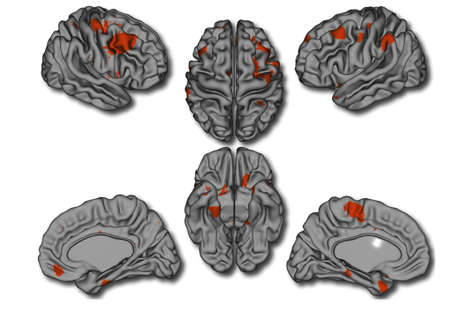Hudziak et al. have examined a database of MRI scans of 232 youths ranging from 6 to 18 years of age, obtained over a period of years. Their analysis revealed that music training was associated with an increased rate of cortical thickness maturation. Clips from their discussion and a figure:
Music training was associated with the rate of cortical thickness maturation in a number of brain areas distributed throughout the right premotor and primary cortices, the left primary and supplementary motor cortices, bilateral parietal cortices, bilateral orbitofrontal cortices, as well as bilateral parahippocampal gyri. Our finding that music training was associated with cortical thickness development in the premotor and primary motor cortices is not surprising, given that both regions contribute to the control and execution of movement.
Music training was also found to influence cortical thickness maturation within aspects of the DLPFC. Myriad imaging and neuropsychological studies have implicated the DLPFC in aspects of executive functioning, including working memory, attentional control, as well as organization and planning for the future. Interestingly, developmental structural neuroimaging studies have shown that participants with quantitatively higher scores on attention problems exhibit delayed cortical thickness maturation in portions of the DLPFC as well as other cortical regions.

Brain areas where local cortical thickness is associated with the “Age × Years of Playing” interaction (N = 232; 334 time points)

